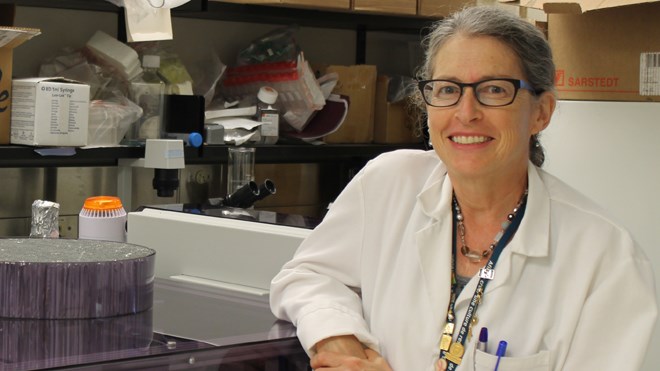Researchers with the Health Sciences North Research Institute will investigate the potential cancer-causing effect of radon gas on lung and blood cells, thanks in part to a $90,000 donation from the NEO Kids Foundation.
Radon is a radioactive gas that occurs naturally when the uranium in soil and rock breaks down. It is invisible, odourless and tasteless.
The gas can accumulate in areas that are not well ventilated, and is more common in basements.
Radon is already known to be the second-leading cause of lung cancer, after smoking, but more recent research has found causal links to other cancers such as lymphoma, myeloma and leukemia.
Leukemia, in particular, is often associated with children, and the rates in Northern Ontario are higher than in the rest of the province.
The HSN Research Institute’s Dr. Leslie Sutherland and her research assistant Jose Knee will conduct some of the first research to observe the direct effects of radon, emanating from different rock samples, on certain types of cells.
Past studies, said Sutherland, have looked at general radon levels in a given area, and drawn correlations to different types of cancer in those same areas.
“A study like this has never been done before, and we are excited to be part of this potentially ground-breaking research,” she said. “Through the research we hope to increase public awareness of the potential dangers associated with radon exposure, be provided with greater insight into the cellular impact of low level radon exposure, and provide direction for future studies aimed at helping to prevent or treat radon-associated cancers.”
Because of Sudbury's ties to the mining sector, Sutherland said the hospital was able to get free rock samples with specific amounts of radon.
A control rock, with very high levels of uranium and thorium, producing a lot of radon, will help calibrate their instruments.
They will then use local rock samples with much lower radon levels, to measure the gas' effect on different tissue samples.
Dr. Denis Roy, president and CEO of Health Sciences North and the research institute, said positive results could lead to stricter guidelines for radon in homes.
The Ontario Building Code currently has a standard of 200 becquerels per cubic metre for radon exposure.
A becquerel measures the amount of radioactive activity in a location.
Radon exposure can be mitigated through proper ventilation.
The Sudubry and District Health Unit says its possible to hire a professional to measure the radon levels in a home, or purchase a testing kit from some hardware stores.
